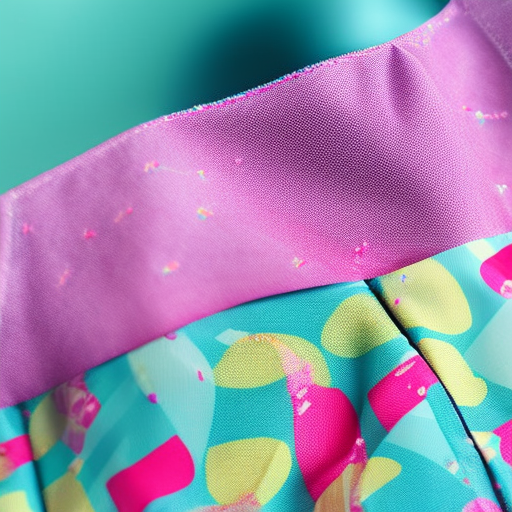When summer comes around, many of us love to spend time at the beach or by the pool. If you enjoy sewing, why not try making your own swimwear? Not only is it a rewarding experience, but it allows you to customize the fit and design according to your preferences. Here are some essential tips to keep in mind while sewing swimwear:
1. Choose the Right Fabric
Opt for fabrics specifically designed for swimwear. Look for materials that offer excellent stretch and recovery, resistance to fading and chlorine, and quick-drying properties. Nylon spandex blends, polyester spandex blends, and recycled swim fabrics are commonly used options.
2. Use the Right Tools
Investing in the right tools will make your sewing experience smoother. Be sure to have ballpoint pins, a rotary cutter, a walking foot, stretch or ballpoint needles, and a stretch stitch or zigzag stitch on your sewing machine. These tools will help you work with stretchy fabrics more effectively.
3. Pre-Wash and Pre-Shrink
Before starting your project, pre-wash and pre-shrink your fabric. This step ensures that the final swimwear piece won’t shrink or become distorted once exposed to water.
4. Take Accurate Measurements
Take precise measurements of yourself or the person you are sewing for. Remember to measure both circumference and length, as well as any other relevant areas like the bust, waist, hips, and inseam. This step guarantees a proper fit for your swimwear.
5. Utilize Elastic and Lining
Make sure to include elastic in certain areas such as the leg openings, waistband, and bust to provide support and shape. Additionally, using lining fabric will enhance comfort, durability, and modesty.
6. Experiment with Designs
One of the joys of sewing swimwear is the freedom to experiment with various designs. Play around with different patterns, color combinations, and embellishments to create a unique and personalized piece.

7. Test Swatches
Before starting on your actual project, make swatches with fabric scraps to test different stitches, techniques, and tension settings. This allows you to see how the fabric behaves and make any necessary adjustments before committing to the final piece.
8. Practice Proper Elastic Application
When applying elastic, stretch it slightly while sewing to ensure it hugs the body when worn. Avoid overstretching, as it can cause puckering or discomfort.
9. Finishing Touches
Once you’ve completed the construction of your swimwear, be sure to finish the edges neatly. You can use a twin needle or a coverstitch machine for professional-looking results.
10. Try a Mock-Up
If you’re new to sewing swimwear, it’s a good idea to create a mock-up using cheaper fabric to test the fit and make adjustments if needed. This way, you won’t waste expensive materials.
Remember, sewing swimwear takes practice, patience, and attention to detail. Don’t be discouraged if it doesn’t turn out perfectly on your first attempt. Keep experimenting and refining your skills, and you’ll soon be creating beautiful swimwear for yourself and your loved ones!




